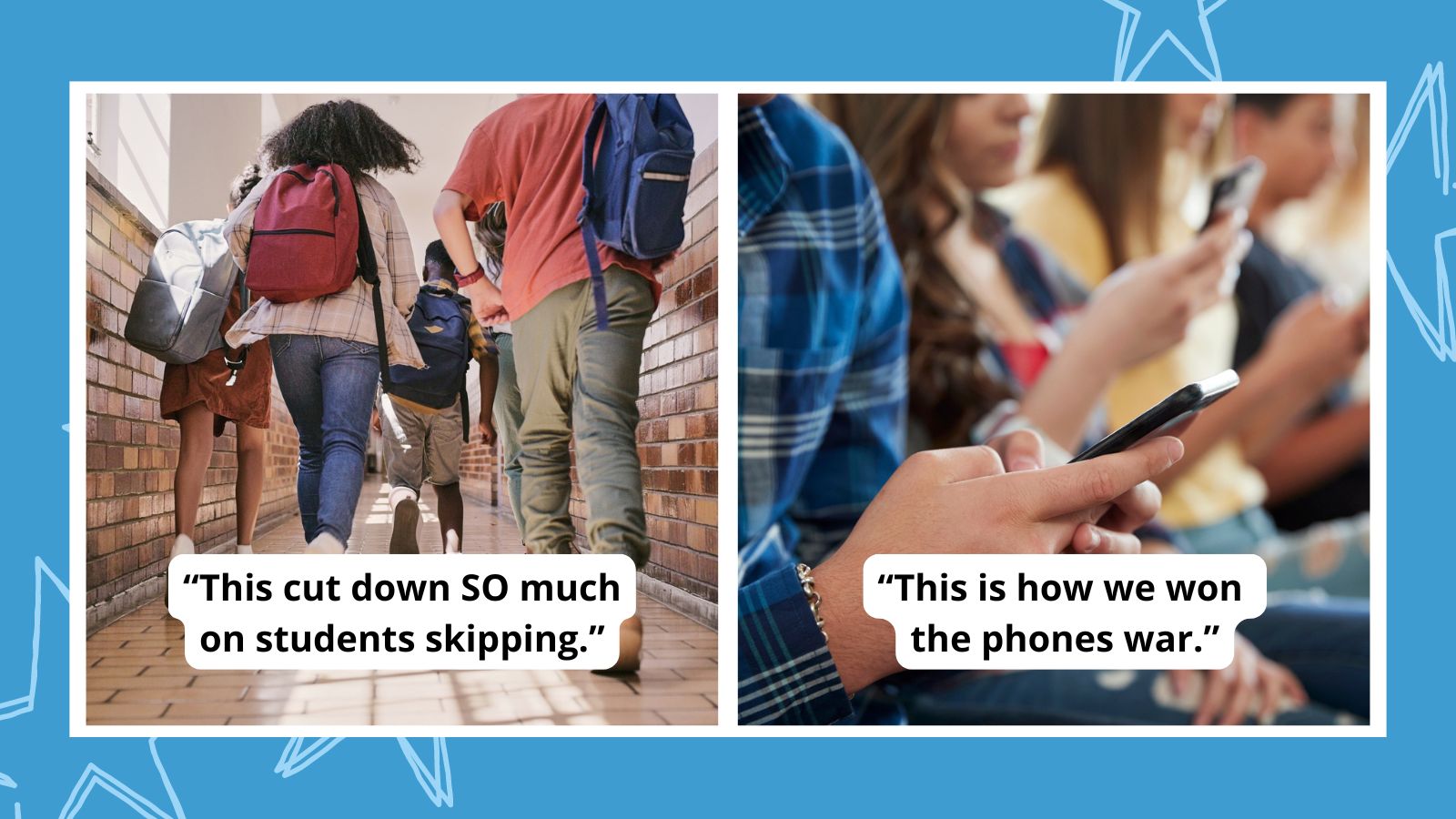
Schools are bustling hubs of activity, and managing them effectively is no small feat. From controlling hallway chaos to building a tight-knit community, educators are getting creative with solutions to take on some of their most challenging issues. Take a look at some of the top solutions to the toughest problems on a recent post in our We Are Teachers Helpline group.
Problem #1: Skipping, loitering, and general hallway havoc
“Smart Pass helps us control frequent flyers, ensuring they don’t skip class together.”
Hallways, especially in the upper grades, can quickly turn into chaos zones. Enter the game changer: electronic hall pass systems. These advanced digital tools meticulously track who’s out, where they’re headed, and for how long. As educator Lori D. puts it, “You can cap the number of passes per day, so students can’t just wander, and teachers aren’t the bad guys.”
One particularly praised pass patrol tool is Smart Pass. This technology seems to be a crowd favorite among upper-grade educators. Many claim that the technology revolutionizes student movement by restricting pass requests to only school-issued devices, eliminating phone use. As one educator notes, “Smart Pass helps us control frequent flyers, ensuring they don’t skip class together.” Security and efficiency rolled into one smart tool. This system not only controls student movement but also coordinates timings to prevent clashes and manage crowd flow. The result? A dramatic leap toward hallway harmony.
Problem #2: Desks not being conducive to learning
“It lets students pick a workspace that matches their learning style.”
Managing a classroom can be a juggling act, especially when students’ needs run the gamut. But many teachers are finding a game changer in flexible seating. Out with rigid rows and in with beanbag seating, standing desks, and floor cushions!
As teacher Mia L. puts it, “Flexible seating lets students pick a workspace that matches their learning style. When done properly, and with a set of clear expectations, I’ve seen it cut down on disruptions and crank up engagement.” It’s not just about comfort; it’s about creating an inclusive, dynamic environment where every student can thrive.
Problem #3: Phones
It’s a win-win: reduced distractions and more peace of mind.
Phones in class? Total distraction, and often a point of contention between students and teachers. Barbara S.’ school is tackling this issue head-on with an innovative approach: Yondr phone pouches that lock devices while staying with the students. “Wall pockets didn’t work; students were worried about theft,” she explains. These pouches offer a practical solution, ensuring that phones are both secure and out of sight. This method addresses the concerns of students who fear losing or damaging their phones while also eliminating the temptation to use them during class. It’s a win-win: reduced distractions and more peace of mind.
Problem #4: Chronic absenteeism
“We’ve created after-school clubs and activities that cater to a variety of interests.”
Addressing school absenteeism often requires a multifaceted approach—or two. Jenn S. emphasizes the importance of holding parents accountable, explaining that parental knowledge of legal consequences for their child’s absences often leads to positive change. However, attendance issues persist in many schools. At Sheridan L. ‘s high school, a special attendance clerk and the use of state truancy laws—such as revoking the driver’s licenses of students under 18—have been implemented to curb cutting class.
On the flip side, other schools are addressing absenteeism through new and engaging enrichment programs. Not only do these programs offer supervised time after school hours, they also offer safe socialization opportunities. “We’ve created after-school clubs and activities that cater to a variety of interests,” explains educator Emily B. Some of the recent additions to her school’s enrichment include dance, board games, and drama.
Problem #5: Creating a strong community
More than just a feel-good start.
Ashley K. reveals how her elementary school is strengthening the community vibe with mandatory morning meetings. “We saw a big boost in our data from student surveys,” she shared. These morning sessions are not just a feel-good start—they’re building a strong sense of belonging that is oh-so important for student success.
While problems are plenty, we see that schools are pulling out all the stops to tackle their toughest challenges head-on. From digital hall passes that keep chaos in check to flexible seating that boosts engagement, these innovative solutions are game changers. It’s clear: With a little creativity and a lot of determination, educators are turning challenges into victories. And as they do, they’re not just improving student outcomes, they’re also making their own lives a bit easier, creating cohesive classrooms instead of taming a circus.


Recent Comments